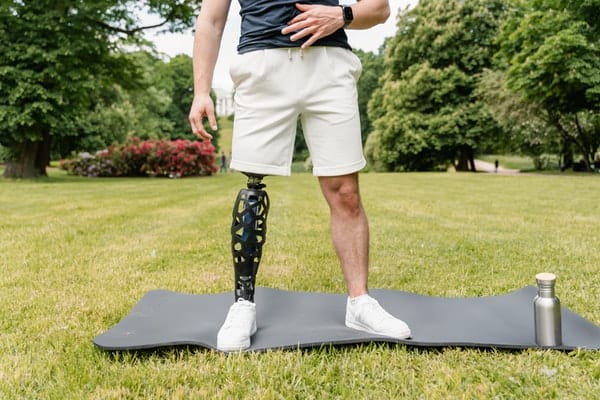
Yoga is a holistic practice that benefits overall wellness. Yoga empowers the practitioner to be self-healing and can address specific conditions.
The infinite variety of yoga movements has something for everyone. However, yoga is not practiced exclusively for the hale and hearty, the fit and flexible, and those suffering from ailments and injuries. Yoga may help repair bodily imbalances caused by cancer, diabetes, hormone problems, and digestive issues, among other things. It can also soothe pain and discomfort and facilitate healing after an injury or chronic physical ailments manifested by genetics or lifestyle.
While every case is specific, some general principles can be applied broadly to the topic of therapeutic yoga.
Pranayama and the Body’s Natural Healing Power
The breath is the body’s most powerful tool and most direct form of energy in its healing power. Prana is transported throughout the body by deep breathing in positive ions carried by oxygen molecules. It also stimulates the thymus gland, located beneath the sternum and connected to the fourth chakra. This gland controls the body’s immune functions.
Yoga’s Relaxation and Visualization Techniques Alleviate Stress and Promote Healing
Many relaxations and meditation exercises can help calm the mind and direct its energies towards the necessary positivity that stimulates the body’s healing power and restores balanced hormone production. Though meditation can be a complex process for some, any breathing or visualization exercises that relax the mind and body can be beneficial, regardless of the duration of the exercise. Whether or not the practitioner reaches a “meditative state” is irrelevant. “
Numerous practitioners have reported benefits from Yoga Nidra (yoga sleep), a guided type of relaxation accessible on CDs, DVDs, and in certain studios. The principle of yoga Nidra rests on setting a positive intention before the practice and allowing the subconscious mind to rest on that intention as one enters deep relaxation through a progressive series that relaxes the body, the mind, the conscious, and finally, the subconscious mind.
This procedure may be utilized to activate the body’s natural healing ability. It has been used to treat addiction, chronic illness, and conditions such as insomnia, anxiety, and depression, often with dramatic results.
The Restorative Aspects of Mind/Body Practices
Hatha yoga’s asanas (poses) may be used to treat virtually any injury to the body’s soft tissues and misalignment of the skeletal structure and disorders affecting internal organ function when done correctly with yogic breathing. It involves directing the body’s healing energy to the area needing treatment using the breath and the mind’s awareness. It is also simply a matter of stretching, massaging, or aligning the space with simple movements.
In cases of strains, sprains, and soreness, passive stretches are best applied. In addition, such styles of yoga as Yin Yoga and Restorative Yoga should be practiced. Suppose pain in the body arises from misalignment of the spine, pelvis, or joints. In that case, Iyengar Yoga and Hatha Yoga are recommended to address proper alignment of the body as it moves. The Alexander Technique and Feldenkrais Method are also systems of movement therapy that effectively treat ailments and retrain the body and mind.
Anatomical Effects of Poses
Asanas are often classified, which differ depending on the yoga tradition being cited. For example, some may organize them by orientation (standing, seated, prone, etc.), others by their effects on the body’s chakras, and others by the kind of energy they stimulate in the body (yin and yang, for example). Therapeutic applications can also organize Yoga asanas.
A few examples of disease or disorders of the internal organs commonly treated with asanas are gastritis, irritable bowel syndrome, constipation, poor kidney function, and conditions of the female reproductive organs. Specific asanas have been designed to target particular parts of the body inside. Consult books, websites, and teachers for tips on specific asanas as they relate to certain conditions. The more one practices asana, the more one sees inherent logic in the application of asanas to specific areas of the body:
- Asanas that compress the lower abdomen massage the organs in this area, such as the large intestine and colon.
- Asanas that stretch and relax the soft belly relieve menstrual pain.
- Asanas that twist the torso cleanse the digestive organs and soothe discomfort caused by too much acidity or toxicity in the oesophagus, stomach, and small intestine.
- Asanas that massage or compress the back have a calming effect on the kidneys and alleviate menstruation discomfort.
- In certain instances, asanas that invert the body alleviate headaches and congestion.
Poses’ Energetic Effects on the Endocrine System
The endocrine system’s main glands are aligned along the axis of the spine with the body’s seven major chakras. Asanas have the ability to excite or soothe the energies associated with these chakras; they have a direct effect on the associated endocrine glands. Thus, specific asanas can help treat thyroid disorders, reproductive issues, digestive problems, mood disorders, and depression simply by restoring the average hormone production of these glands.
Consulting professionals and professional resources in yoga to find treatments for special conditions can be a powerful complement to traditional Western medical treatment. It has been shown to accelerate healing, maintain health, and promote a holistic state of wellbeing in the hands of a regular practitioner.